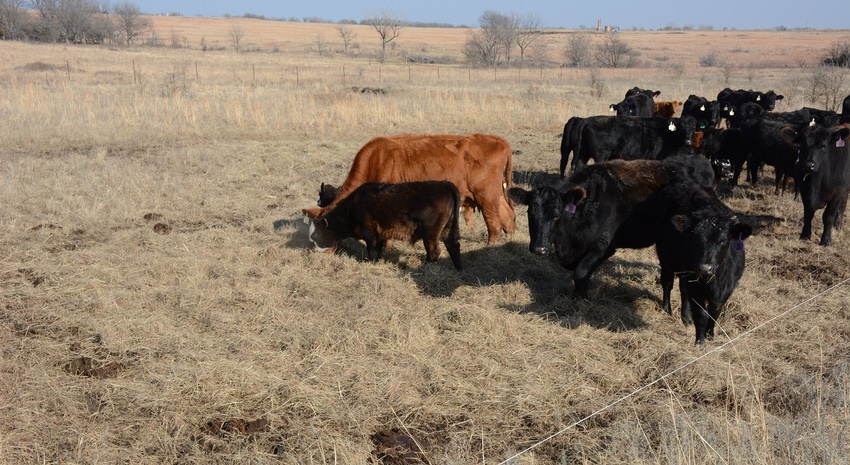
Is bale unrolling a better nutrient management practice than bale grazing?
For people in snow country there’s likely not an option to unroll, but the question is whether unrolling offers any real advantages.
In May 2018 Beef Producer carried a story on possible nutrient overload and leaching issues from bale grazing. This can be alleviated with nutrient testing and planning, but another option for some people could be rolling out round-baled hay to spread nutrients and animal impact.
To allow uniform manure nutrient distribution during bale grazing, a Manitoba online publication suggests placing the bales on a grid of 40-foot centers, leaving 30 to 35 feet between the bales. The implication is that the manure and urine from cattle will be concentrated within a 20-foot radius of each bale’s center. The author has measured this in his own bale grazing and it seems a reasonable estimate.
Of course, the comparison we’re making is what would happen to that concentration of nutrients when the bale is rolled out. From the author’s own experience this past winter, it appears 100 yards is about a typical length for rollout of a 6-foot-diameter bale, if that bale is unrolled opposite of the direction it was rolled up during baling. In these conditions, the width of nutrient distribution seems closer to 14 feet than 20 for a 6-foot-wide bale. Those circumstances appear to suggest the following as guidelines:
Bale grazing on 40-foot centers – Most bale nutrients processed and spread in 1,256 square feet 3.14 x (20x20) [pi x radius squared] = 1,256 square feet.
Bale unrolling – Most bale nutrients processed and spread in 4,200 square feet. 300 x 14 feet = 4,200 square feet.
Unrolling would spread the nutrients across roughly three and a half times the area. Also, rolling out hay usually leaves less residual behind and does not smother future forage as much as bale grazing.
Unrolling the hay bales in the direction they were rolled spreads them much farther, potentially increasing the square feet of coverage for the nutrients, but is spottier because the hay rolls off the bale unevenly.
Another variable would be unrolling can work well for those who prefer feeding from truck or tractor on a daily basis and not setting bales and controlling access with moveable electric fence.
How much nutrients?
Since bovine pass-through of the primary nutrients can be in the neighborhood of 90%, you can multiply the nutrients in your hay by 0.9 and get a pretty good idea how much nitrogen, phosphorus and potassium you are putting down.
Some would argue you should know your hay quality by way of testing, but even if you don’t you can again get a reasonable idea how much nutrients are there by using data from the forage testing lab and/or land-grant university in your state. We’ll use Missouri data as an example.
Missouri agronomists say one ton of dry, warm-season hay contains 35 pounds of nitrogen, 10 pounds phosphorus and 35 pounds potassium. If each of your bales weighs 1,100 pounds, without doing the math you can see you would be putting down about half that amount in urine, dung and waste hay for each bale rolled out or grazed in place.
An easy way to convert to actual weights would be to divide the actual bale weight by one ton (2,000 pounds) to create a percentage, then multiply that by the pounds of each nutrient, minus 10%. If you had 1,400-pound bales of that Missouri warm-season grass, for example, your initial calculation would be 1,400/2,000 = 0.7. Then multiply that denominator by each nutrient, so nitrogen in that bale would be 35 x 0.7 = 24.5 pounds. Then subtract 10% by multiplying 24.5 by 0.9 to get about 22.05 pounds nitrogen applied.
About the Author(s)
You May Also Like




